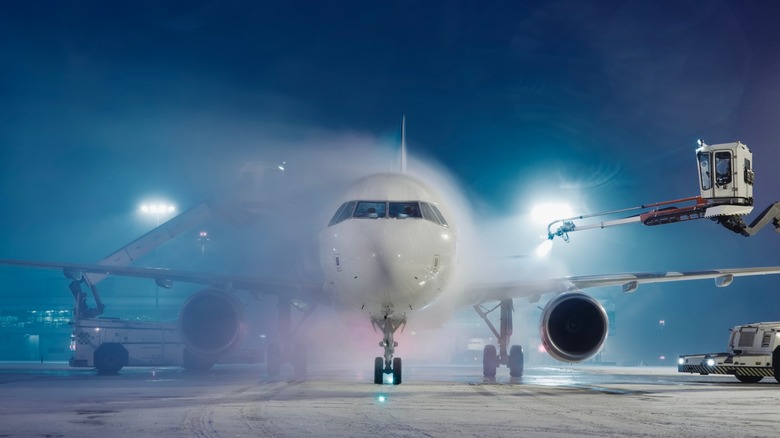
There's something oddly satisfying about watching airport crews spray airplanes. They spray them with those bright orange and green liquids. But don't mistake it for a paint job. We don't see many orange and green planes anyway. This spray paint is part of the science behind flight safety. Airplane wings need to be squeaky clean. This is not for looks, but for lift and performance. Even a small amount of snow, frost, or ice can disrupt airflow over the wings. This can be problematic for an aircraft
trying to stay in flight. That's where de-icing and anti-icing fluids come in.
If you want to know the science behind de-icing and why it's essential for safe air travel, then you should know about these sprays. Think of the orange and green stuff as the dynamic duo that keeps a plane safe when temperatures drop. Ice can form in all the wrong places. Think wing edges, sensors, control surfaces, and even engine inlets. As such, these fluids are important in preventing this hazard. With that said, let's break down and get insight into what the orange and green stuff they spray on planes is.
Read more: 12 WD-40 Hacks You'll Wish You Knew Sooner
Orange First, Then Green After

The orange stuff is de-icing fluid. Its job is to strip away anything that shouldn't be there, including frost, snow, slush, and thin ice. It is made from a mix of propylene glycol or ethylene glycol and water. The orange color is so that ground crews can easily spot what areas have been covered. There are four types used globally. Type I is the thinnest, and must be applied very close to take off so it doesn't wear off. Type II is a hit and lasts a bit longer. Type III is thinner than Type II but has the same durability. It is especially great for small aircraft that use less speed. Type IV is as thick as Type II but lasts longer before wearing off.
Once the orange stuff does its job, it's time for the green stuff. The green fluid is a shield, whereas the orange is a sword. The green fluid is usually Type IV anti-icing fluid, and it's designed to stick around. Anti-icing and de-icing commercial jets are different things. Type IV prevents new ice from forming during that vulnerable window before takeoff. This is why Type IV fluid is thicker. The fluid holds it in suspension and keeps it from bonding to the aircraft. Especially if snow or freezing rain falls on it while the plane is taxiing or waiting in line for departure. Once the plane speeds up during takeoff, the fluid shears off due to airflow. It then leaves an ice-free wing behind.
Want the latest in tech and auto trends? Subscribe to our free newsletter for the latest headlines, expert guides, and how-to tips, one email at a time.
Read the original article on SlashGear.











